Reputable top quality green tea is produced meticulously using fine tender buds and has the unique characteristics of jade green color, pervasive aroma, intense full-bodied taste and beautiful shape. Therefore the correct method of tea brewing is to fully manifest these four characteristics so as to realize the aesthetic appreciation and enjoyment of the tea. To achieve this objective, we need to master the four basic steps of utensil selection, water temperature control, manner of tea feeding and infusion technique.
Utensil Selection
Crystal clear and transparent top quality glassware should be selected for brewing of top grade fine green tea. Besides enhancing visual aesthetics, the use of glass also facilitates the appreciation of infusion color as well as the gradual tea bud reactions of unfolding, flotation and migration in the infusion, which is fantasized as the ‘dance of tea’. This can be further dramatized by holding a glass of tea infusion silhouetted against sunlight or lamp light. Infiltrating from behind, the light illuminates the floating and migrating fine furry tips which glitter on reflection like a dispersal of starry sparkles, arousing a dreamy illusion.
Either porcelain cup or covered bowl could be used for brewing of medium to high grade tea. For low to medium grade, normal tea pot could also be used. Tea pot has a bigger volume. On filling with hot water, its temperature can be maintained for a longer time. This helps in more effective dissolution of nutrition from the coarse tea leaves. However, if the tea pot is used in brewing top grade high quality green tea, the temperature of the infusing hot water cannot drop as timely as desired. It can then ‘overcook’ the tender buds, resulting in the loss of the refreshing aroma and freshness in taste!
Water Temperature Control
Historically, it has been the tradition of Chinese tea connoisseurs to place special emphasis on water quality and infusion temperature. Water from the mountain is considered the top quality; from the river and stream, medium quality and from the well, the lowest quality.
Emperor Huizong of Sung Dynasty, Chao Ji elaborated on the prerequisites of top quality water in more explicit terms:-
It must be clear, free of any suspended matters, colorless, transparent and free of any sedimentation.
It must be light. This is logical scientifically as the lighter water should have lesser dissolved mineral matters or other unwanted chemical dosage, which would invariably taint the natural taste of tea infusion.
It must be ‘sweet’ to the taste buds, rendering a pleasant sense of lingering freshness, which would surely complement and enhance the natural taste of tea.
It must be cold. Because cold water has its source in the deep sub-strata of the ground and hence, is free from any pollutions.
Source of water must be ‘living’, meaning that it is flowing continuously. It is proven that bacteria cannot easily multiply in flowing water. The relatively higher content of dissolved oxygen, carbon dioxide and other gases in flowing water has self-purifying effect and the resulting aeration improves the freshness and tastiness of tea infusion.
Having thus a good water source at the onset does not automatically assure satisfactory tea infusion. The next focus should now be devoted to appropriate water temperature control. Too high water temperature has the undesirable effect of ‘overcooking’ the ‘tea green’ in confinement, resulting in a yellowish and cloudy infusion which is much bitter in taste. Its substantial vitamin content could easily be destroyed.
Conversely, if the water temperature is too low, the essential elements in the tea leaves cannot be sufficiently dissolved, resulting in an infusion that is too light in taste. Sometimes, it also leads to the failure of the tea leaves to sink, which remain floating on the water. Consequently, drinking is much inconvenienced.
In general, the higher grade and more precious the fine tender tea is, the lower should the water temperature be. Water temperature ranging from 75°C to 80°C is suitable for Bi Lo Chun. Temperature range from 80°C to 85°C is suitable for other reputable fine tea. For medium to lower grade tea, hotter temperature range from 95°C to 100°C can be used.
Feeding of tea leaves
Three basic methods of leaf feeding are to be considered:-
Direct feeding into the glass before pouring the required quantity of water in one go is known as ‘bottom feeding’;
Firstly, feed tea leaves into the glass; then pour in boiled water cooled to 90°C till one third of glass volume and let it stand for about 3 minutes. When the soaked leaves have absorbed sufficient water and start to unfurl, fill the glass up to its full volume. This is known as ‘middle feeding’; and
The glass is firstly filled with 85°C~90°C boiled water. Tea leaves are then fed into the glass. This is known as top feeding.
Either top or middle feeding method is suitable for top grade teas such as Long Jing and Bi Lo Chun which are tightly furled and compacted in shape. Middle feeding method is suitable for top grade fine tea types which are loosely furled. Bottom feeding method is suitable for normal green tea types.
Water Pouring
Finally the skill of water pouring would determine the ultimate quality of tea infusion. Three basic techniques are to be mastered, viz.:-
With the water pot lifted high up above the glass, the hot water should be discharged at an oblige projectile, landing on the side of the glass so as to guide the water flow along the side wall as it feeds into the glass;
After water filling, whether the glass of infusion should be covered or not is dependent on the conditions of tea leaves, infusion water temperature and the prevailing weather. If the leaves (buds) are tender and water hot, it should not be covered during summer; otherwise, it should then be covered to steep the tea. During steeping of reputable top grade tea, it could be covered only for about one minute. The cover should then be taken off to await the gradual infusion of the essential elements from the leaves, whilst patiently inhaling the enduring aroma emanating from the infusion. The infusion should not be covered for too long to avoid ‘overcooking’ and consequently, spoiling the tea;
The follow-up rounds of water pouring should be performed consecutively on time. The first brew is called the ‘first unfurled tea’ or ‘upstream tea’. When the tea is drunk till about one third of the infusion is left, the glass should then be filled promptly. This is referred to as the ‘follow-up water’. If the follow-up water is poured too late (e.g. water is filled only when the first unfurled tea has been fully drunk), the second brew would inadvertently become rather diluted and tasteless.
*** Once the art of tea brewing as illustrated in the four basic steps recommended above is mastered, you can rest assured be capable of fully expressing the character of the tea by successfully preparing a good tea that has the right color, steep aroma and full-bodied taste***
Introductions of Special Blended Coffees
The variations in flavour that can be produced by skilful blending are endless.
Its aim is to bring together the individual and sometimes contrasting flavours of the world’s great original coffees, creating new and exciting harmonies that will delight the consumer.
It will take you into the selection that will suit your taste for coffees that can be drunk at different times of day or on different occasions.
Mild Blends
The variations in flavour that can be produced by skilful blending are endless. The harmonising of superb and individual characteristics that will delight the consumer is paramount.
Breakfast Blend (Medium Roasted)
A full bodied coffee with a pleasing mild, nutty acidity. We blend selected varieties from Colombia and India, creating a breakfast coffee to enjoy black or with hot milk. Recommended for preparation in filter makers or by the jug method.
Chagga (Medium) Blend (Medium Roasted)
A blend of Chagga from Mount Kilimanjaro with a quality India coffee. This is an excellent morning or after-lunch coffee.
Hanover Blend (Medium Roasted)
A rich, very full bodied, high quality blend achieved by sensitively blending Costa Rica Tarrazu, Tanzania Kibo Chagga, Colombia Supreme and Brazil Santos. A very versatile coffee to be enjoyed with most foods. Recommended for preparation by filter method. Serve black or with cream.
Mocha and Mysore Blend (Medium Roasted)
A light, mild coffee with an interesting, fruity acidity. A blend of Ethiopia Mocha and India Mysore. Recommended for filter makers and Cafetières. Serve black or with cream or hot milk.
Medium Blends
The variations in flavour that can be produced by skilful blending are endless. The harmonising of superb and individual characteristics that will delight the consumer is paramount.
Brazilia Blend (Blended Roasts)
This combines Brazil Santos, Colombia and India coffees, specially roasted and blended to create a milder "sweet" espresso coffee. Not as powerful in character as our Creole or Santa-Mokka blends, its function is is to satisfy those who want a large cup of coffee, a "long" espresso or milder cappuccino. It can also be enjoyed prepared by Filter machines or La Cafetières, as a full rich general purpose coffee.
Caffe Dora Blend (Blended Roasts)
Introducing Caffe Dora Blend.This coffee has been blended specially for use in an espresso machine. It has all the flavour of a great espresso coffee with only half the caffeine content. We also recommend it drunk black or with cream as a cafetiere coffee.
Java Chagga-Mocha Blend (Blended Roasts)
Three original coffees, roasted and blended to produce a rich flavour with an interesting, fruity background. Can be enjoyed with most foods. Serve black or with cream. Will prepare well in all makers, especially recommended for filters and Cafetières.
Vienna Blend (Blended Roasts)
A medium strong coffee with a subtle edge of strength and smooth background. We blend Brazil Santos and Tanzania Double A Chagga with Colombia Supreme. It will prepare well in all makers. Serve black or with cream.
Strong Blends
The variations in flavour that can be produced by skilful blending are endless. The harmonising of superb and individual characteristics that will delight the consumer is paramount.
After-Dinner Blend (Dark Roasted)
A strong, lively coffee with a full, nutty flavour. We use the same coffees as in Breakfast Blend, but roast longer to deepen the character. Will prepare well in all makers. Serve black or with cream.
Caffe Roma Blend (Blended Roasts)
A rich, lively strong coffee with a fine sweetness at the finish. Coffees from India, Tanzania and Brazil are blended to achieve this espresso, cappuccino coffee. It can also be prepared in filter makers and Cafetières.
Chagga (Dark) Blend (Dark Roasted)
A blend of Chagga from Mount Kilimanjaro with a quality India coffee. This is an excellent morning or after-lunch coffee.
Higgins Coffee-House Blend (Blended Roasts)
Strong and smooth with a subtle edge at the finish. We blend Colombia, Tanzania and India coffees to make this strong general purpose coffee. Prepares well in all coffee makers including percolators and can be enjoyed black or with cream.
Santa-Mokka Blend (Blended Roasts)
A smooth strong coffee with a rich, mellow background. We use coffees from Brazil and Colombia blending them to create an intense flavour that will produce strong cappuccino or medium strong espresso coffee. It is recommended for all makers. Serve black or with cream.
Its aim is to bring together the individual and sometimes contrasting flavours of the world’s great original coffees, creating new and exciting harmonies that will delight the consumer.
It will take you into the selection that will suit your taste for coffees that can be drunk at different times of day or on different occasions.
Mild Blends
The variations in flavour that can be produced by skilful blending are endless. The harmonising of superb and individual characteristics that will delight the consumer is paramount.
Breakfast Blend (Medium Roasted)
A full bodied coffee with a pleasing mild, nutty acidity. We blend selected varieties from Colombia and India, creating a breakfast coffee to enjoy black or with hot milk. Recommended for preparation in filter makers or by the jug method.
Chagga (Medium) Blend (Medium Roasted)
A blend of Chagga from Mount Kilimanjaro with a quality India coffee. This is an excellent morning or after-lunch coffee.
Hanover Blend (Medium Roasted)
A rich, very full bodied, high quality blend achieved by sensitively blending Costa Rica Tarrazu, Tanzania Kibo Chagga, Colombia Supreme and Brazil Santos. A very versatile coffee to be enjoyed with most foods. Recommended for preparation by filter method. Serve black or with cream.
Mocha and Mysore Blend (Medium Roasted)
A light, mild coffee with an interesting, fruity acidity. A blend of Ethiopia Mocha and India Mysore. Recommended for filter makers and Cafetières. Serve black or with cream or hot milk.
Medium Blends
The variations in flavour that can be produced by skilful blending are endless. The harmonising of superb and individual characteristics that will delight the consumer is paramount.
Brazilia Blend (Blended Roasts)
This combines Brazil Santos, Colombia and India coffees, specially roasted and blended to create a milder "sweet" espresso coffee. Not as powerful in character as our Creole or Santa-Mokka blends, its function is is to satisfy those who want a large cup of coffee, a "long" espresso or milder cappuccino. It can also be enjoyed prepared by Filter machines or La Cafetières, as a full rich general purpose coffee.
Caffe Dora Blend (Blended Roasts)
Introducing Caffe Dora Blend.This coffee has been blended specially for use in an espresso machine. It has all the flavour of a great espresso coffee with only half the caffeine content. We also recommend it drunk black or with cream as a cafetiere coffee.
Java Chagga-Mocha Blend (Blended Roasts)
Three original coffees, roasted and blended to produce a rich flavour with an interesting, fruity background. Can be enjoyed with most foods. Serve black or with cream. Will prepare well in all makers, especially recommended for filters and Cafetières.
Vienna Blend (Blended Roasts)
A medium strong coffee with a subtle edge of strength and smooth background. We blend Brazil Santos and Tanzania Double A Chagga with Colombia Supreme. It will prepare well in all makers. Serve black or with cream.
Strong Blends
The variations in flavour that can be produced by skilful blending are endless. The harmonising of superb and individual characteristics that will delight the consumer is paramount.
After-Dinner Blend (Dark Roasted)
A strong, lively coffee with a full, nutty flavour. We use the same coffees as in Breakfast Blend, but roast longer to deepen the character. Will prepare well in all makers. Serve black or with cream.
Caffe Roma Blend (Blended Roasts)
A rich, lively strong coffee with a fine sweetness at the finish. Coffees from India, Tanzania and Brazil are blended to achieve this espresso, cappuccino coffee. It can also be prepared in filter makers and Cafetières.
Chagga (Dark) Blend (Dark Roasted)
A blend of Chagga from Mount Kilimanjaro with a quality India coffee. This is an excellent morning or after-lunch coffee.
Higgins Coffee-House Blend (Blended Roasts)
Strong and smooth with a subtle edge at the finish. We blend Colombia, Tanzania and India coffees to make this strong general purpose coffee. Prepares well in all coffee makers including percolators and can be enjoyed black or with cream.
Santa-Mokka Blend (Blended Roasts)
A smooth strong coffee with a rich, mellow background. We use coffees from Brazil and Colombia blending them to create an intense flavour that will produce strong cappuccino or medium strong espresso coffee. It is recommended for all makers. Serve black or with cream.
Introductions of Teas
One of the great pleasures of life is "a nice cup of tea". It can be enjoyed anywhere at anytime, but it is probably most enjoyed when taken at leisure. Although tea is easy to make, a certain amount of care and attention to detail is required if it is to be served at its best.
Use freshly drawn cold water and bring to the boil. Warm the teapot and measure in the tea. Quantities are a matter of personal preference, but as a general guide we recommend one teaspoon per person for small leaf teas, and one teaspoon per person plus one for the pot for the large leaf teas. When the water is boiling pour it directly on to the tea, taking the teapot to the kettle. The larger the leaf size the longer the infusion time.
Always keep the teapot clean. The deposits that will eventually build up in the teapot are detrimental to the flavour of your fine tea.
The recommended way to take tea with milk is to put the milk into the cup first. However, when trying a new tea the quantity of milk may need some adjustment, so experiment at first by putting only a very little milk into the cup before the tea - further milk may then be added if required. Green teas and oolong teas are usually taken without milk. Green teas, especially China teas, may be enjoyed with a slice of lemon. Alternatively, a little sugar is reputed to enhance the flavour and character of green tea.
Types of Tea
The finest teas are the result of a subtle combination of natural physical and climatic conditions, devoted and efficient production and manufacture. They can he enjoyed without being blended with other teas and are sometimes described in the tea trade as 'self-drinkers'. Fine teas correspond to the fine wines in the wine trade, each having its own identity and being appreciated for itself.
Manufactured tea can be divided into three groups:
Fermented Tea (Black Tea): By far the largest group, black tea can be drunk with or without milk.
Unfermented Tea (Green Tea):Produced mainly in China and Japan. Best drunk without milk.
Semi-fermented Tea (Oolong Tea):Produced mainly in Formosa. Best drunk without milk.
Storing Tea
Tea is generally easy to store. It keeps best in volume, so avoid leaving a single packet on the shelf. Store it in a container with a tight fitting lid, a caddy, or storage jar, out of the light in a cool dry place, away from other strong penetrating aromas. Tea will become stale and produce
disappointing results if left with prolonged exposure to the air
Teas By Country
Ceylon (Sri Lanka)
In the world of tea production Ceylon is still the recognised name for teas from the beautiful island country of Sri-Lanka, a name the country re-adopted in 1972. The island is rich in natural resources, and in the fertile hill-country growing conditions are excellent for the production of quality tea.
Ceylon Dimbula (Black Tea)
Dimbula was one of the first areas to be planted in the 1870s. This tea has a lovely bright flavour and rich colour.
Ceylon Orange Pekoe Pettiagalla (Black Tea)
A special fine quality Ceylon tea. Selected for its smooth, full, distinctive character.
China
The Chinese describe tea being drunk as long ago as 2700 BC, but until the Tang Dynasty 618-907 AD it was taken mainly as a medicine. Before the Second World War, China produced half the world's supply and old records tell us that at one time Chinese Tea Merchants recognised 8,000 different grades of tea.
Pu Erh (Black Tea)
Pu Erh tea is grown in the Yunnan province of China where it has been drunk as a curative for around 2000 years. This tea has been ripened using carefully controlled fermentation giving the leaves an reddish orange appearance. The flavour is earthy, smooth and slightly toasted. Brew for 3 to 4 minutes. A further infusion is possible. Serve without milk.
Jasmine (Green Tea)
From the Fujian province, A semi-fermented tea scented with Jasmine flowers.
Keemun (Black Tea)
From Northern China, an aromatic tea with a very smooth, soft character. It is suitable for drinking black, or with a slice of lemon, or with milk.
China Lapsang Souchong (Black Tea)
Famous for its smoky, syrupy taste, yet having a smooth flavour. Compared with the Formosa Lapsang Souchong this is lighter in character.
Rose Congou (Black Tea)
From the North of China, this flavoursome large leaf tea has a distinctive fragrance from being scented with rose petals.
Yunnan (Black Tea)
From one of China's largest and most famous tea growing provinces, this fine tea has a lovely fresh aroma and a powerful flavour with a crisp tangy edge.
Formosa (Taiwan)
This island country off the coast of China is famous for its production of Oolong Teas. These semi-fermented teas have a delicacy and excellence unique to Formosa production.
Formosa Lapsang SouchongBlack Tea
A very powerful tea with a tarry or smoky character. Stronger than the China Lapsang Souchong.
Formosa Oolong (Oolong Tea)
A light, delicately flavoured tea with a soft fruity background. Best served black.
Oolong Silver Tip (Oolong Tea)
Demand from Japan has made this tea difficult to obtain. It is a large leaf tea of exceptional quality, it makes a smooth, fragrant cup with a peachy background.
India
This vast and climatically varied country, with its long association with Britain, is a major producer of black tea. Fine quality India teas are now famous and in demand throughout the tea-drinking world.
Darjeeling Garden Mark Castleton (Black Tea)
The best Darjeeling tea is described by the connoisseur as a 'champagne' among teas, because of its fine character and quality. This is an example of one of the world's choicest teas, which is in limited supply because of demand. There are many tea gardens within the Darjeeling district. We select tea from a particular garden each season.
Sikkim Garden Mark Temi Flowery Orange Pekoe (Black Tea)
Sikkim, a British Protectorate since 1817 and incorporated into India in 1975, lies between Nepal and Bhutan, in the Himalayas, north of Darjeeling. This tea is grown at altitudes of 4,000 to 5,000 feet above sea-level and the remote area produces only a small amount of tea each year. It is much sought after by connoisseurs because of its quality and rich aromatic flavour.
Darjeeling Fine Tippy Golden Flowery Orange Pekoe (Black Tea)
Grown at altitude along the slopes of the Himalayas, this is a highly esteemed tea, rich in the cup and having a delightful muscatel aroma
Darjeeling Flowery Orange Pekoe (Black Tea)
A quality leaf tea with a delicate flavour.
Assam Garden Mark Dejoo (Black Tea)
The Dejoo tea estate lies in the province of Lakhimpur, Assam. The flavour is brisk and full bodied. Brew for 4 to 5 minutes and serve black or with milk.
Assam Garden Mark Dikom (Black Tea)
The Dikom garden is in the northern part of Assam. The tea has a light malty character with a golden appearance in the cup. Brew for 4 to 5 minutes and enjoy black or with milk.
Assam Tippy Golden Broken Orange Pekoe (Black Tea)
This is a fine example of a rich Assam tea with a very full and well balanced flavour.
Assam C.T.C. (Black Tea)
Following the demand for small leaf teas which infuse quickly, tea production has become highly mechanised. C.T.C. (Crush, Tear, Curl) production gives a very strong tea in the cup with a powerful full-bodied flavour.
Nilgiri Broken Orange Pekoe (Black Tea)
A strong bright lively tea from the famous Nilgiri hills in the south of India. Excellent with milk or black or with a slice of lemon.
Use freshly drawn cold water and bring to the boil. Warm the teapot and measure in the tea. Quantities are a matter of personal preference, but as a general guide we recommend one teaspoon per person for small leaf teas, and one teaspoon per person plus one for the pot for the large leaf teas. When the water is boiling pour it directly on to the tea, taking the teapot to the kettle. The larger the leaf size the longer the infusion time.
Always keep the teapot clean. The deposits that will eventually build up in the teapot are detrimental to the flavour of your fine tea.
The recommended way to take tea with milk is to put the milk into the cup first. However, when trying a new tea the quantity of milk may need some adjustment, so experiment at first by putting only a very little milk into the cup before the tea - further milk may then be added if required. Green teas and oolong teas are usually taken without milk. Green teas, especially China teas, may be enjoyed with a slice of lemon. Alternatively, a little sugar is reputed to enhance the flavour and character of green tea.
Types of Tea
The finest teas are the result of a subtle combination of natural physical and climatic conditions, devoted and efficient production and manufacture. They can he enjoyed without being blended with other teas and are sometimes described in the tea trade as 'self-drinkers'. Fine teas correspond to the fine wines in the wine trade, each having its own identity and being appreciated for itself.
Manufactured tea can be divided into three groups:
Fermented Tea (Black Tea): By far the largest group, black tea can be drunk with or without milk.
Unfermented Tea (Green Tea):Produced mainly in China and Japan. Best drunk without milk.
Semi-fermented Tea (Oolong Tea):Produced mainly in Formosa. Best drunk without milk.
Storing Tea
Tea is generally easy to store. It keeps best in volume, so avoid leaving a single packet on the shelf. Store it in a container with a tight fitting lid, a caddy, or storage jar, out of the light in a cool dry place, away from other strong penetrating aromas. Tea will become stale and produce
disappointing results if left with prolonged exposure to the air
Teas By Country
Ceylon (Sri Lanka)
In the world of tea production Ceylon is still the recognised name for teas from the beautiful island country of Sri-Lanka, a name the country re-adopted in 1972. The island is rich in natural resources, and in the fertile hill-country growing conditions are excellent for the production of quality tea.
Ceylon Dimbula (Black Tea)
Dimbula was one of the first areas to be planted in the 1870s. This tea has a lovely bright flavour and rich colour.
Ceylon Orange Pekoe Pettiagalla (Black Tea)
A special fine quality Ceylon tea. Selected for its smooth, full, distinctive character.
China
The Chinese describe tea being drunk as long ago as 2700 BC, but until the Tang Dynasty 618-907 AD it was taken mainly as a medicine. Before the Second World War, China produced half the world's supply and old records tell us that at one time Chinese Tea Merchants recognised 8,000 different grades of tea.
Pu Erh (Black Tea)
Pu Erh tea is grown in the Yunnan province of China where it has been drunk as a curative for around 2000 years. This tea has been ripened using carefully controlled fermentation giving the leaves an reddish orange appearance. The flavour is earthy, smooth and slightly toasted. Brew for 3 to 4 minutes. A further infusion is possible. Serve without milk.
Jasmine (Green Tea)
From the Fujian province, A semi-fermented tea scented with Jasmine flowers.
Keemun (Black Tea)
From Northern China, an aromatic tea with a very smooth, soft character. It is suitable for drinking black, or with a slice of lemon, or with milk.
China Lapsang Souchong (Black Tea)
Famous for its smoky, syrupy taste, yet having a smooth flavour. Compared with the Formosa Lapsang Souchong this is lighter in character.
Rose Congou (Black Tea)
From the North of China, this flavoursome large leaf tea has a distinctive fragrance from being scented with rose petals.
Yunnan (Black Tea)
From one of China's largest and most famous tea growing provinces, this fine tea has a lovely fresh aroma and a powerful flavour with a crisp tangy edge.
Formosa (Taiwan)
This island country off the coast of China is famous for its production of Oolong Teas. These semi-fermented teas have a delicacy and excellence unique to Formosa production.
Formosa Lapsang SouchongBlack Tea
A very powerful tea with a tarry or smoky character. Stronger than the China Lapsang Souchong.
Formosa Oolong (Oolong Tea)
A light, delicately flavoured tea with a soft fruity background. Best served black.
Oolong Silver Tip (Oolong Tea)
Demand from Japan has made this tea difficult to obtain. It is a large leaf tea of exceptional quality, it makes a smooth, fragrant cup with a peachy background.
India
This vast and climatically varied country, with its long association with Britain, is a major producer of black tea. Fine quality India teas are now famous and in demand throughout the tea-drinking world.
Darjeeling Garden Mark Castleton (Black Tea)
The best Darjeeling tea is described by the connoisseur as a 'champagne' among teas, because of its fine character and quality. This is an example of one of the world's choicest teas, which is in limited supply because of demand. There are many tea gardens within the Darjeeling district. We select tea from a particular garden each season.
Sikkim Garden Mark Temi Flowery Orange Pekoe (Black Tea)
Sikkim, a British Protectorate since 1817 and incorporated into India in 1975, lies between Nepal and Bhutan, in the Himalayas, north of Darjeeling. This tea is grown at altitudes of 4,000 to 5,000 feet above sea-level and the remote area produces only a small amount of tea each year. It is much sought after by connoisseurs because of its quality and rich aromatic flavour.
Darjeeling Fine Tippy Golden Flowery Orange Pekoe (Black Tea)
Grown at altitude along the slopes of the Himalayas, this is a highly esteemed tea, rich in the cup and having a delightful muscatel aroma
Darjeeling Flowery Orange Pekoe (Black Tea)
A quality leaf tea with a delicate flavour.
Assam Garden Mark Dejoo (Black Tea)
The Dejoo tea estate lies in the province of Lakhimpur, Assam. The flavour is brisk and full bodied. Brew for 4 to 5 minutes and serve black or with milk.
Assam Garden Mark Dikom (Black Tea)
The Dikom garden is in the northern part of Assam. The tea has a light malty character with a golden appearance in the cup. Brew for 4 to 5 minutes and enjoy black or with milk.
Assam Tippy Golden Broken Orange Pekoe (Black Tea)
This is a fine example of a rich Assam tea with a very full and well balanced flavour.
Assam C.T.C. (Black Tea)
Following the demand for small leaf teas which infuse quickly, tea production has become highly mechanised. C.T.C. (Crush, Tear, Curl) production gives a very strong tea in the cup with a powerful full-bodied flavour.
Nilgiri Broken Orange Pekoe (Black Tea)
A strong bright lively tea from the famous Nilgiri hills in the south of India. Excellent with milk or black or with a slice of lemon.
Saturday, December 13, 2008
Subscribe to:
Post Comments (Atom)
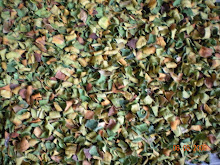



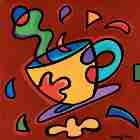





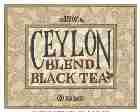
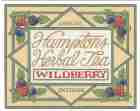
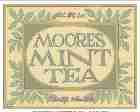
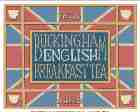

No comments:
Post a Comment